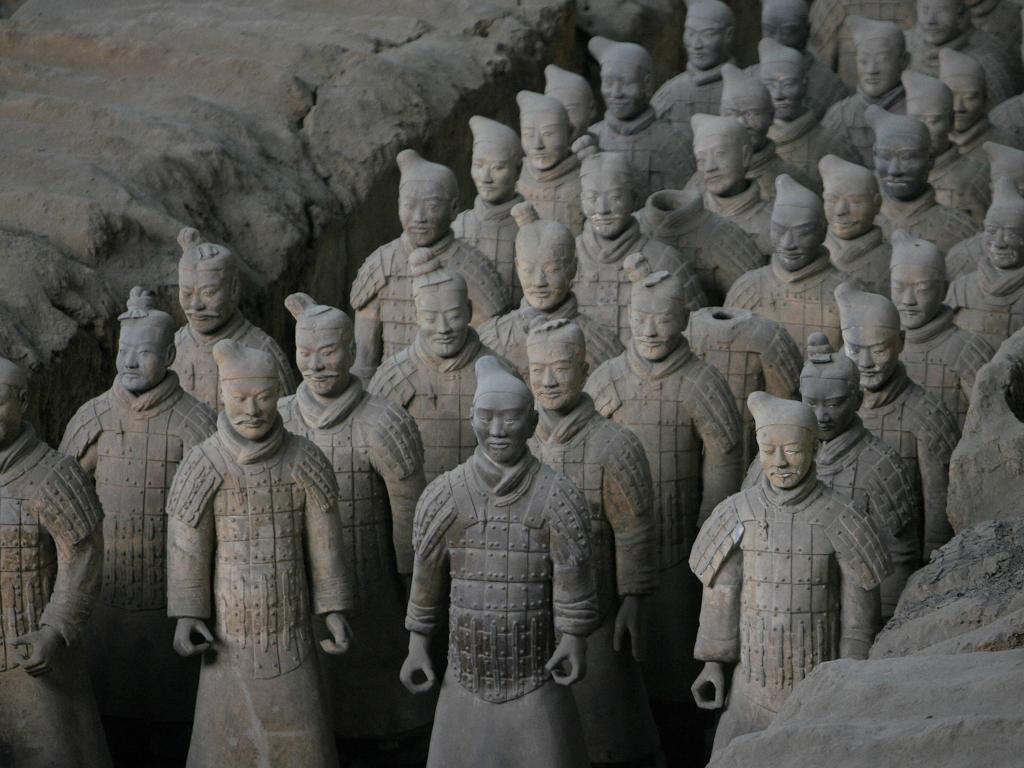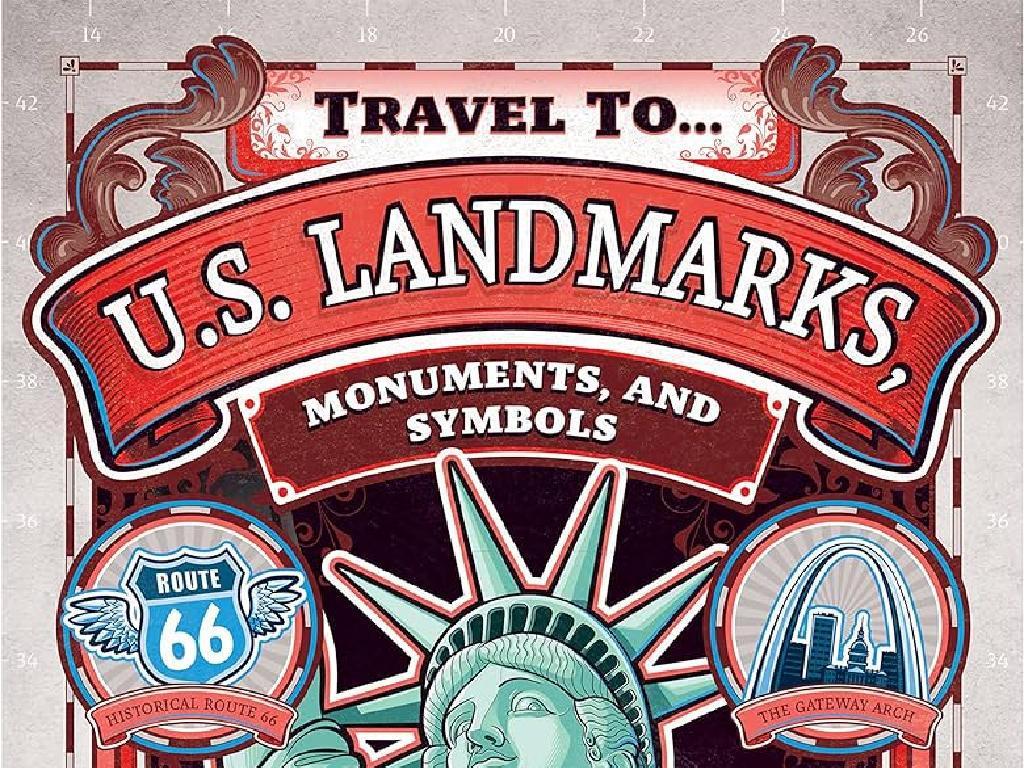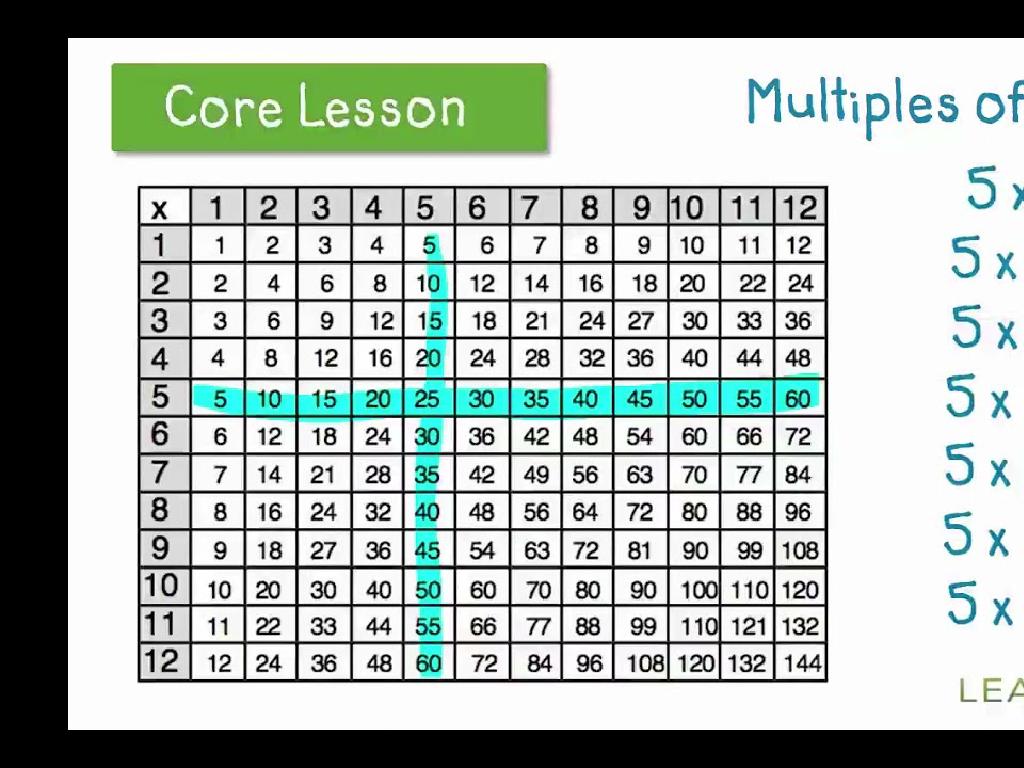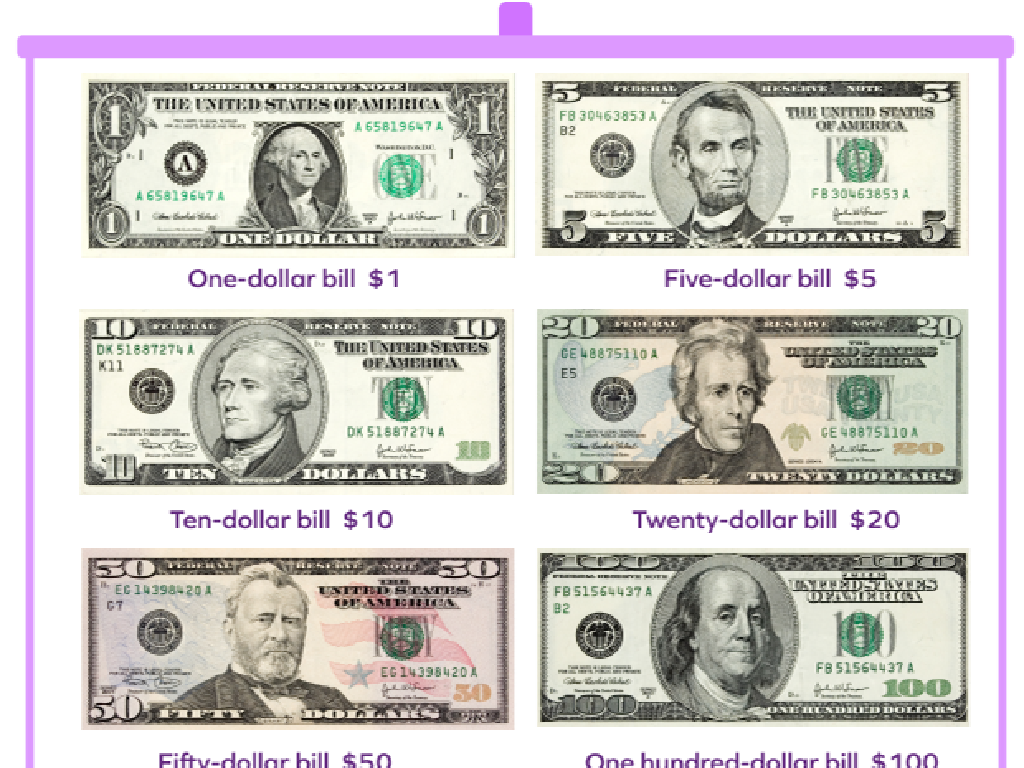Identify Reflections, Rotations, And Translations
Subject: Math
Grade: Eighth grade
Topic: Transformations And Congruence
Please LOG IN to download the presentation. Access is available to registered users only.
View More Content
Exploring Transformations in Geometry
– Understanding transformations
– Transformations move/alter shapes without changing size.
– Types: Reflections, Rotations, Translations
– Reflection: flip over a line, Rotation: turn around a point, Translation: slide in any direction.
– Real-world transformation examples
– Patterns in art, map reading, and engineering.
– Congruence and transformations
– Shapes remain the same size and shape after transformations.
|
This slide introduces the concept of transformations in geometry, which are operations that alter the position of shapes while preserving their size and shape. We will focus on three types: reflections (flipping a shape over a line), rotations (turning a shape around a point), and translations (sliding a shape in any direction). Students will learn how these concepts apply to real-world scenarios such as creating patterns in art, reading maps, or designing mechanical parts. Understanding congruence is crucial as it ensures that despite these transformations, the shapes remain identical in size and form. Encourage students to think of examples from their daily lives where they observe these transformations.
Exploring Geometric Transformations
– Define geometric transformation
– A movement of figures in a plane, changing position or size.
– Explore types of transformations
– Reflections flip, rotations turn, translations slide figures.
– Daily life transformation examples
– Rotating a door knob, reflecting in a mirror, translating a chair.
– Understanding transformation effects
|
This slide introduces the concept of geometric transformations, which are movements that change the position, orientation, or size of figures in a plane. Start by defining transformation in a geometrical context. Then, discuss the three main types: reflections (flips), rotations (turns), and translations (slides). Provide relatable examples such as turning a doorknob (rotation), seeing oneself in a mirror (reflection), and moving a chair across the room (translation). Emphasize that these transformations can be seen in everyday life and are fundamental concepts in understanding the properties of shapes and space. Encourage students to visualize and possibly demonstrate these concepts to grasp their effects on figures.
Exploring Reflections in Geometry
– Understanding reflections
– A reflection flips a shape over a line, creating a mirror image.
– Properties of reflections
– Reflective shapes are congruent, maintain size and shape, but the orientation changes.
– Reflection symmetry in real life
– Nature: butterfly wings; Daily life: reflections in water or mirrors.
– Analyzing reflective transformations
|
This slide introduces the concept of reflection in the context of geometric transformations. A reflection is essentially a ‘flip’ of a shape over a specific line called the line of reflection, resulting in a mirror image of the original shape. It’s crucial to emphasize that the reflected shape is congruent to the original, meaning it keeps the same size and shape but the orientation is reversed. Provide real-world examples to help students relate to the concept, such as the symmetry in butterfly wings or reflections in water. Encourage students to visualize reflections by using a mirror to observe how images are reversed and to draw reflections of simple shapes on graph paper.
Exploring Rotations in Geometry
– What are rotations?
– A rotation turns a shape around a fixed point, called the center of rotation.
– Degrees and rotational symmetry
– Every rotation has a degree that measures the turn; rotational symmetry occurs when a shape looks the same after a partial rotation.
– Rotations observed in nature
– Examples include the rotation of the Earth, patterns in flowers, and the circular motion of stars.
– Rotations in mechanical design
– Gears and turbines use rotations to function; wheels and rotors are practical applications.
|
This slide introduces the concept of rotations in geometry, which is a type of transformation where a figure is turned around a point. It’s important to explain that the degree of rotation is the angle through which the figure is rotated. Rotational symmetry is a key concept where a shape still looks the same after a certain amount of rotation. Provide real-life examples such as the rotation of celestial bodies and the symmetry in natural objects to help students connect the concept to the world around them. Discuss how rotations are fundamental in machinery, such as in the functioning of gears and engines. Encourage students to think of other examples where rotations play a crucial role in design and function.
Understanding Translations in Geometry
– Define a Translation
– A translation slides a shape a certain distance in a given direction.
– Characteristics of Translations
– Translated shapes are congruent to the original and maintain orientation.
– Translations in the Real World
– GPS systems use translations to represent movement from one location to another.
– Practice with Translation Examples
– Use grid paper to translate shapes and observe congruency and direction.
|
This slide introduces the concept of translations within the topic of transformations and congruence. A translation, in geometric terms, is a type of transformation that slides a shape without rotating or flipping it. It’s crucial to emphasize that the shapes remain congruent, meaning they are the same size and shape, and maintain their orientation. Real-world examples, such as how GPS systems track movement, can help students connect the concept to everyday life. Encourage students to practice by translating shapes on grid paper, noting how the shapes remain congruent and retain their orientation, which reinforces the characteristics of translations.
Identifying Transformations in Geometry
– Recognizing reflections
– A reflection flips a shape over a line, like a mirror image.
– Understanding rotations
– Rotation turns a shape around a point, like spinning a wheel.
– Translating shapes
– Translation slides a shape in any direction without rotating it.
– Coordinate grid practice
– Use graph paper to plot points and visualize transformations.
|
This slide introduces students to the three basic geometric transformations: reflections, rotations, and translations. Reflections are like mirror images, where a shape is flipped across a line. Rotations involve turning a shape around a fixed point, similar to spinning a wheel. Translations move a shape from one place to another without rotating it. Using a coordinate grid helps students visualize these concepts by plotting points and observing the changes. Provide practice problems where students identify and perform these transformations on a grid. Encourage them to use tracing paper to better understand reflections and rotations. This hands-on approach will help solidify their understanding of geometric transformations.
Congruence and Transformations
– Defining congruent shapes
– Shapes are congruent if they have the same size and shape.
– Transformations’ role in congruence
– Transformations like reflections, rotations, and translations can move shapes without altering their congruence.
– Demonstrating congruence
– Use transformations to show two shapes are congruent by superimposing one onto the other.
– Class activity: Find congruence
– Activity: Identify congruent shapes using transformations in pairs or groups.
|
This slide introduces the concept of congruence in geometry and explains how transformations affect it. Congruent shapes are identical in form and dimension, though they may be flipped, rotated, or moved. Students will learn that transformations such as reflections, rotations, and translations do not change the size or shape of objects, thus preserving congruence. To demonstrate understanding, students will engage in a class activity where they apply transformations to prove the congruence of different shapes. This hands-on approach helps solidify the concept and encourages collaborative learning. Provide examples of congruent shapes and transformations for students to work with during the activity.
Class Activity: Transformation Stations
– Station 1: Reflective Art
– Create art with symmetry by reflecting shapes
– Station 2: Rotation Patterns
– Use a protractor to rotate shapes and form patterns
– Station 3: Translation Trail
– Move a shape along a path on grid paper to understand translation
– Engage with hands-on geometry
|
This class activity is designed to provide students with a hands-on understanding of geometric transformations. At Station 1, students will create symmetrical art, learning about reflections and the line of symmetry. Station 2 involves using a protractor to rotate shapes, helping students grasp the concept of rotation and angles. Station 3 allows students to map out a translation path for a shape on grid paper, solidifying their understanding of translation. Encourage creativity and ensure students document their steps. Possible variations for different students could include using different shapes, creating complex patterns, or challenging them to predict the outcome before performing the transformation.
Transformations: Practice & Homework
– Recap: Reflections, Rotations, Translations
– Review flipping, turning, and sliding of shapes
– Practice methods at home
– Use online resources or draw shapes on grid paper
– Homework: Transformation Worksheet
– Complete the provided worksheet on transformations
– Due next class: Share findings
– Be prepared to discuss the transformations you worked on
|
As we conclude today’s lesson on transformations, students should be able to identify and describe reflections, rotations, and translations. Encourage them to continue practicing at home by using online resources or drawing shapes on grid paper to visualize these transformations. For homework, students are assigned a Transformation Worksheet that will reinforce their understanding of the concepts covered in class. They should complete this worksheet and be ready to share their findings in the next class. This will help solidify their grasp of the material and prepare them for more advanced topics in geometry.






